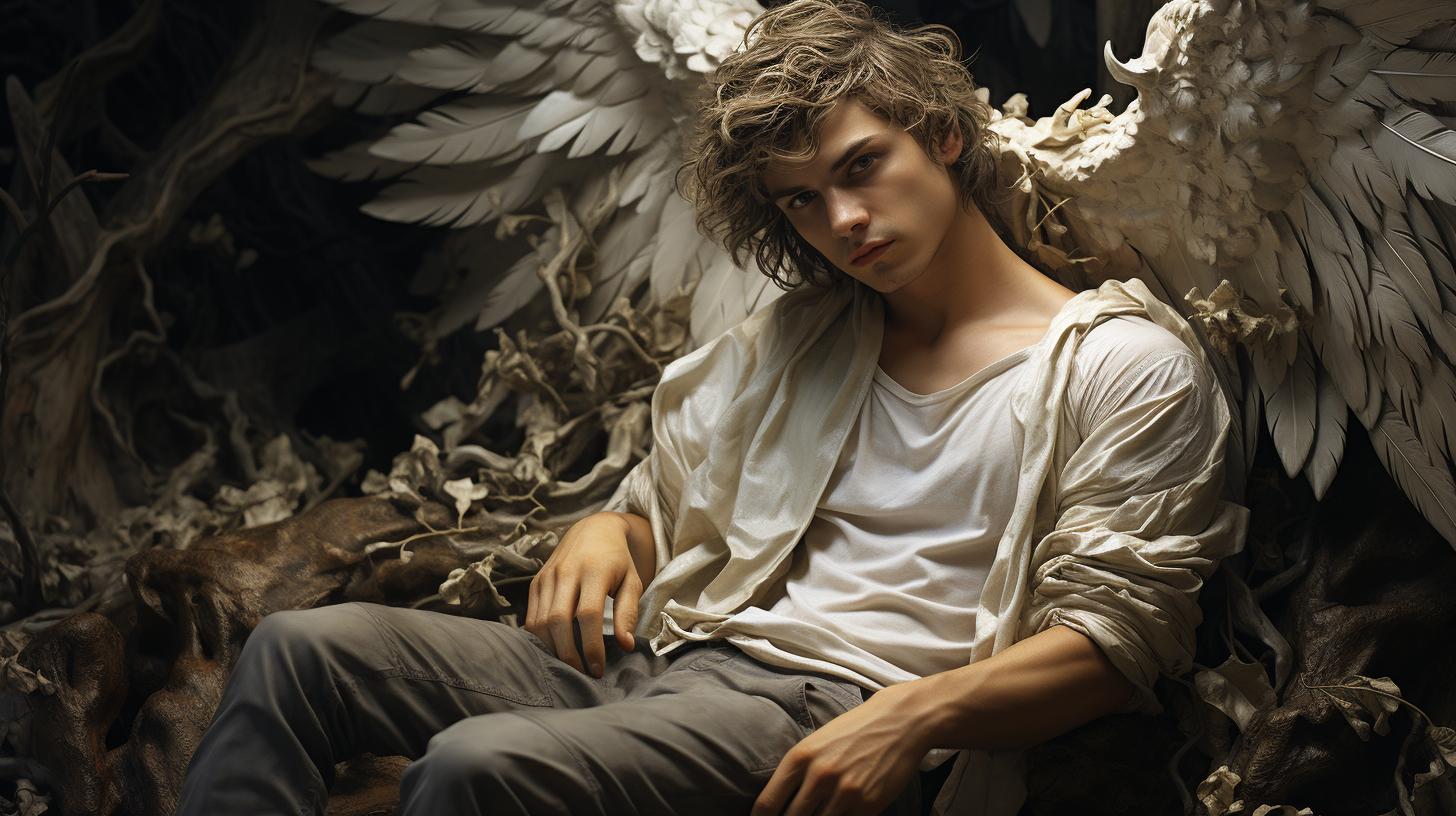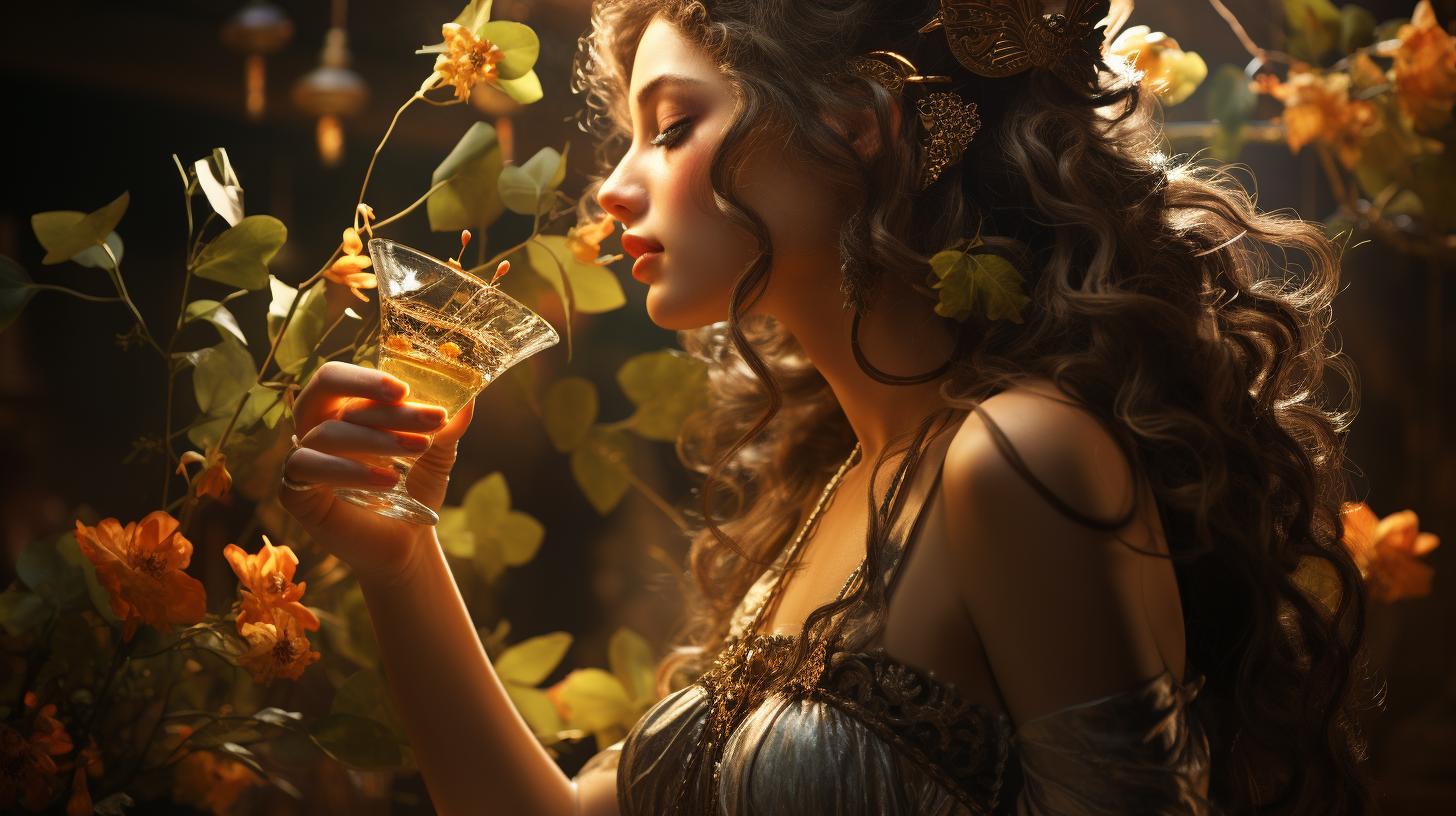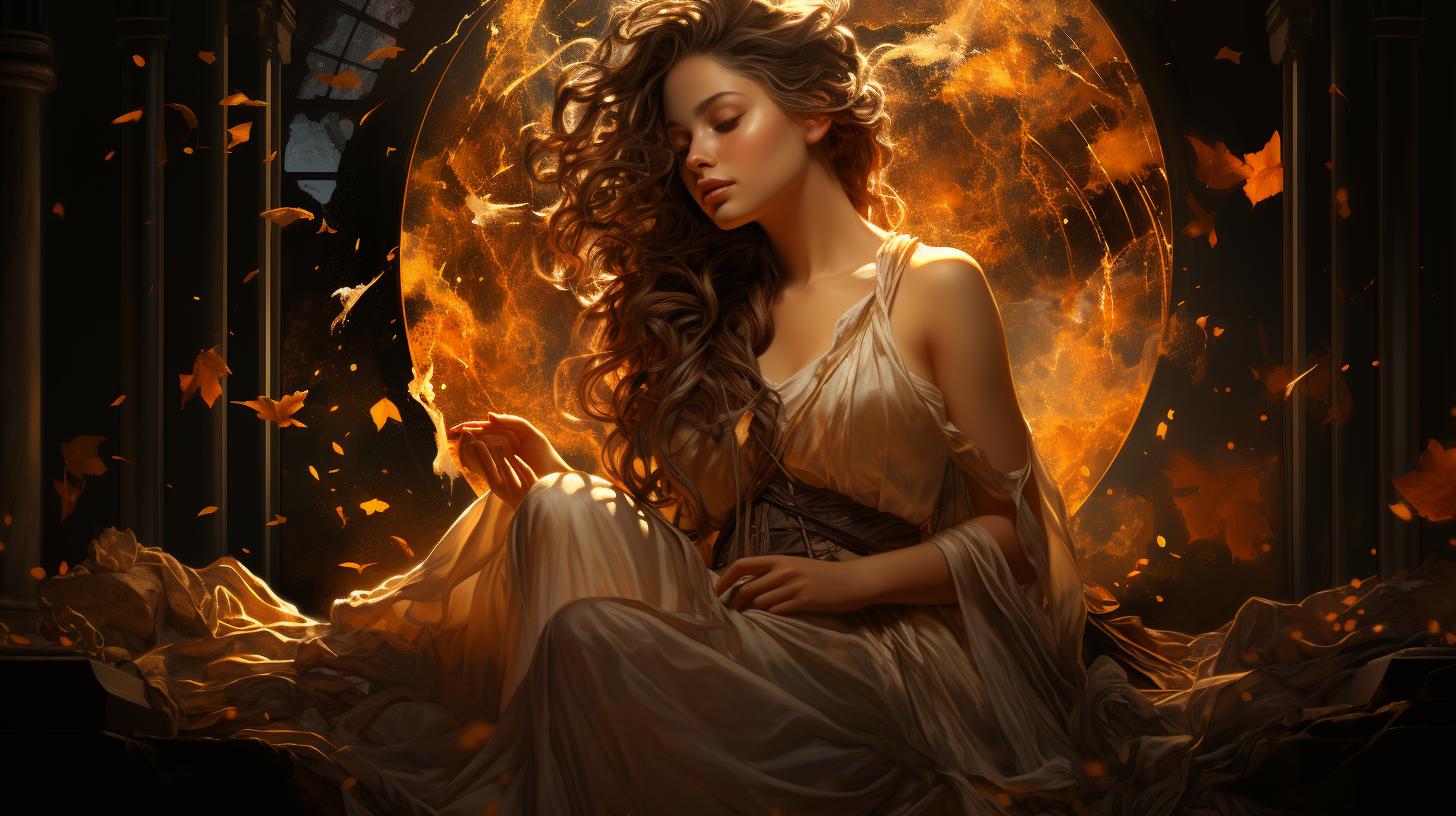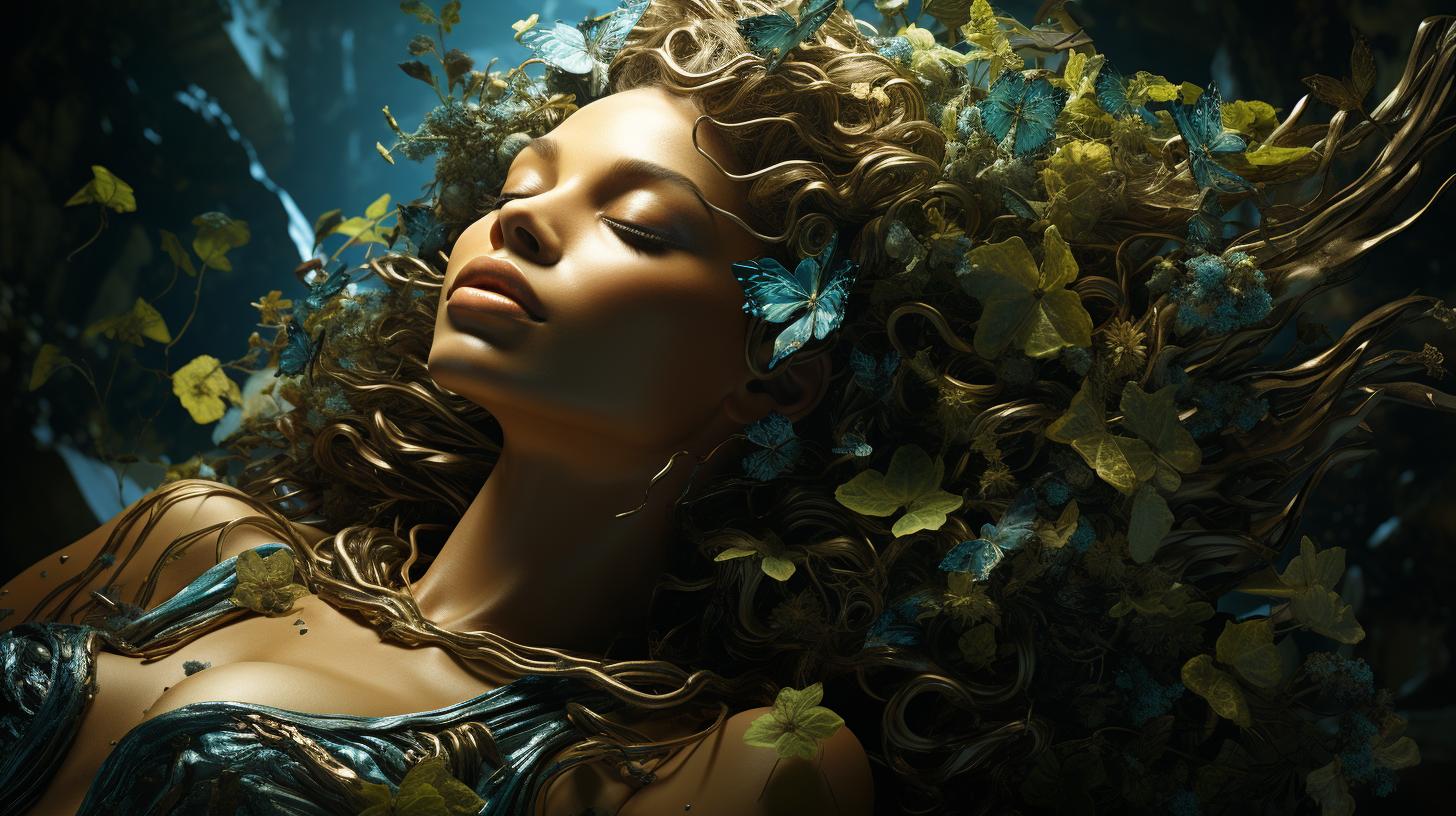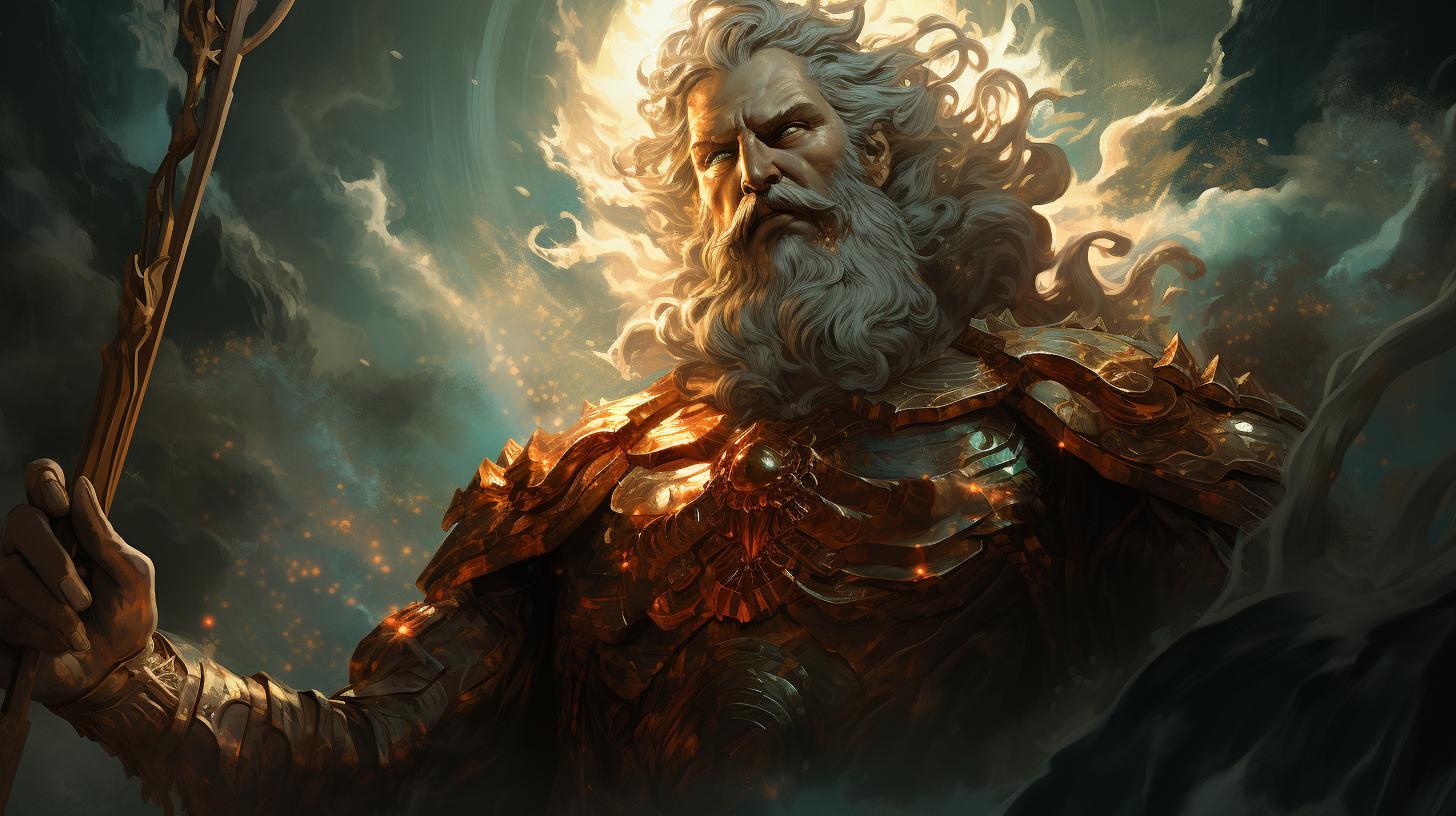Stories about Pan the Greek god: Tales of the Rustic Deity

Pan the Greek god, known as the patron of shepherds and a deity of nature, holds a significant role in Greek mythology. Associated with music, fertility, and spring, he is often depicted with goat legs and horns.
Pan’s creation of the Pan flute from reeds belonging to the nymph Syrinx adds to the god’s artistic attributes. Legends of Pan’s mischievous nature and his participation in a musical contest with Apollo showcase his prominence.
By delving into the enchanting stories surrounding Pan, we unravel the intriguing tales of this rustic deity and his impactful presence in ancient Greek culture.
Pan the Greek God: Exploring the Mythological Deity
Welcome to the fascinating world of Pan, the Greek god! In this section, we will delve into the mythical tales and legends surrounding this intriguing deity.
Pan, known as the god of shepherds and nature, holds a special place in Greek mythology and ancient world history.
The origins of Pan can be traced back to the rich tapestry of Greek mythology.
He is often depicted with goat legs and horns, embodying the rustic essence of the natural world. His unique appearance and attributes make him a captivating character in Greek folklore.
One of the most intriguing aspects of Pan is his close association with the natural world.
As the patron of shepherds, he embodies the untamed wilderness and is often worshipped by those who dwell in rural areas. Pan’s connection to nature is deeply rooted in Greek culture, and his depiction in shrines and natural environments reflects the reverence that ancient Greeks held for the natural world.
Another fascinating aspect of Pan’s mythology lies in his role as a craftsman. The story of his creation of the Pan flute, made from the reeds of the nymph Syrinx, showcases his artistic prowess and ingenuity.
This iconic instrument not only symbolizes Pan’s musical talents but also serves as a reminder of the transformative power of love.
Love forms an integral part of Pan’s mythology, particularly in his ill-fated romance with Syrinx.
The tale of their relationship, which ultimately led to Syrinx’s transformation into reeds in her attempt to escape Pan’s advances, highlights the complex and sometimes tragic nature of love in Greek mythology.
Music plays a significant role in Pan’s story, as he is often portrayed as a skilled musician. His connection to melodies and harmonies is legendary, captivating both mortals and gods alike.
Pan’s enchanting music evokes a sense of joy, celebration, and a deep connection to the natural rhythms of the world.
Additionally, Pan’s influence extends beyond music and nature. He is associated with fertility and spring celebrations, symbolizing renewal and growth.
The festivities honoring Pan were marked by rituals and practices that aimed to invoke his blessings for bountiful harvests and successful breeding seasons.
Throughout Greek art and mythology, representations of Pan showcase his rustic charm and exuberant spirit.
His mischievous nature and playful interactions with other gods add depth and complexity to his character, further solidifying his role as a prominent figure in Greek mythology.
As we explore Pan’s mythology and delve into the stories that surround this fascinating deity, we invite you to embark on an enchanting journey through ancient Greece and discover the rich tapestry of tales that have shaped our understanding of Pan, the Greek god.
The Origins of Pan: A Look into Greek Mythology and Ancient World History
The origins of Pan, the Greek god of nature and shepherds, can be traced back to ancient Greek mythology and the rich history of the ancient world. Pan is believed to be the son of Hermes, the messenger of the gods, and a wood nymph named Dryope.
In Greek mythology, Pan is often depicted as a half-human, half-goat creature with pointy ears, horns, and goat legs. His unique appearance sets him apart from other gods and highlights his close affinity with nature.
According to mythological accounts, Pan’s birth caused his mother to flee in terror, as she was horrified by his unconventional appearance. To ease her fears, the other gods transformed her into a poplar tree.
This symbolic transformation signifies the inseparable connection between Pan and the natural world.
As Pan grew older, he became known for his expertise in the art of music. It is believed that he invented the Pan flute, a musical instrument made from reeds.
The story goes that Pan fell in love with the beautiful nymph Syrinx, but she spurned his advances. In her attempt to escape his pursuit, she pleaded with the water nymphs to transform her into a bed of reeds.
Pan, heartbroken, gathered the reeds and crafted the first Pan flute, forever immortalizing his unrequited love.
Pan’s significance in ancient Greek culture extended beyond his musical prowess. He was revered as the patron deity of shepherds due to his association with the pastoral way of life.
Shepherds would often seek his protection and guidance, as he was believed to watch over their flocks and ensure their well-being.
Apart from his role as a guardian of shepherds, Pan also held a prominent place in ancient Greek religious practices.
His worshippers would gather in caves or natural environments to pay homage to him and seek his blessings. These sacred gatherings were an integral part of ancient Greek society, reflecting the importance of Pan in their cultural and religious traditions.
The origins of Pan, rooted in Greek mythology and ancient world history, highlight the deep connection between the natural world and human existence. Through his unique appearance, musical talents, and association with shepherds, Pan embodies the melding of humanity and nature.
His enduring presence in Greek mythology continues to captivate and inspire, serving as a reminder of the intricate interplay between gods, humans, and the natural world.
The Nature of Pan: Unveiling the God’s Association with the Natural World
Pan, the Greek god, is closely intertwined with the natural world, embodying the essence of rusticity and wilderness.
As the patron of shepherds, Pan holds a deep connection to the countryside and pastoral life. His goat-like features symbolize his affinity for nature, evoking images of untamed wilderness and ancient fertility rites.
One of Pan’s most significant roles relates to the protection and care of wildlife. He is often depicted wandering through forests and mountains, watching over the creatures that inhabit them.
Pan’s association with the wilderness goes beyond his appearance; it reflects his role as a guardian and preserver of the natural order.
Furthermore, Pan’s influence extends to the changing seasons and the cycles of life. As a god associated with both fertility and spring, he embodies the rejuvenation and growth that occur in nature during this time.
The arrival of spring is often marked by celebratory rituals in honor of Pan, emphasizing the connection between his domain and the Earth’s natural rhythms.
Pan’s presence is felt most vividly in the tranquil settings of caves and sylvan groves, where his followers would gather to worship and seek his blessings. These natural surroundings served as sacred spaces, representing Pan’s realm and offering a sanctuary for spiritual communion with the divine.
Additionally, Pan’s relationship with music is deeply intertwined with his connection to the natural world. The melodies that emanate from his legendary instrument, the Pan flute, are said to mimic the sounds of nature itself.
It is through his music that Pan is believed to evoke emotions, invoke joy, and establish a harmonious connection between humanity and the natural environment.
In understanding the nature of Pan, we uncover a god whose essence lies in his intimate bond with the natural world. From the mountains to the meadows, Pan’s presence permeates the very fabric of the countryside, embodying the untamed spirit of the wild and reminding us of the enduring beauty and power of nature.
The Craftsman God: The Creation of Pan’s Flute and Its Symbolism
The Greek god Pan, known for his rustic nature, is often associated with his creation of the famous Pan flute. This unique musical instrument holds both historical and symbolic significance within Greek mythology.
According to the myth, Pan was deeply enamored with the beautiful nymph Syrinx. However, she did not share his affections and instead chose to transform herself into a bed of reeds to escape his pursuit.
Filled with grief, Pan gathered the reeds and ingeniously crafted them into a flute, which is now famously known as the Pan flute or Syrinx.
The creation of the Pan flute holds several symbolic meanings.
Firstly, it represents Pan’s profound connection to music and his role as the patron of shepherds. The hauntingly beautiful melodies produced by the Pan flute were believed to bring comfort and solace to both humans and animals alike.
Moreover, the Pan flute symbolizes the transformative power of art and the ability to overcome heartbreak and loss. Pan’s creation of the flute allowed him to channel his emotions and express his sorrow through music, a cathartic process that resonated with many ancient Greeks.
In addition to its symbolism, the Pan flute also carried practical uses. Shepherds would often play the Pan flute while tending to their flocks, as the tranquil melodies were believed to have a calming effect on the animals.
It was also used during religious ceremonies dedicated to Pan, further reinforcing the instrument’s connection to spirituality and nature.
Throughout history, the Pan flute has continued to captivate audiences with its ethereal notes and enchanting melodies.
Its distinct sound evokes a sense of nostalgia and a deep connection to nature, carrying the legacy of Pan’s craftsmanship and artistic expression.
Pan’s Love Story: The Tale of Syrinx the Nymph and the Transformation into Reeds
One of the fascinating stories associated with Pan, the Greek god of nature, is the tale of his love for the nymph Syrinx and her transformation into reeds.
This enchanting narrative explores the depth of Pan’s affection and the profound consequences it had on both Pan and Syrinx.
According to ancient Greek mythology, Pan, with his goat legs and horns, was captivated by the beauty and grace of Syrinx, a nymph of extraordinary charm.
However, Syrinx, devoted to her role as a follower of Artemis, the goddess of the hunt, denied Pan’s advances out of loyalty to her vows.
Unwilling to give up, Pan pursued Syrinx relentlessly, but she remained adamant in her refusal.
Desperate and heartbroken, Pan found solace in his music and the woods, pouring out his emotions through melodies that echoed through the valleys and mountains.
One fateful day, as Pan’s pursuit grew more intense, Syrinx, seeking refuge in the Arcadian forest, reached a riverbank.
Sensing Pan drawing near, Syrinx prayed to the gods, begging for salvation from his relentless pursuit. Hearing her desperate plea, the gods answered in a most unexpected way.
In an act of divine intervention, the river nymphs transformed Syrinx into a cluster of reeds.
As Pan arrived at the riverbank, he found himself surrounded by these slender reeds, emanating a soundscape reminiscent of the melodies he himself had once played.
In his grief and longing for Syrinx, Pan embraced the reeds, fashioning them into a musical instrument known as the Pan flute.
By doing so, he unknowingly ensured Syrinx’s eternal presence in his music, forever intertwined with his own existence.
The tale of Syrinx’s transformation into reeds not only highlights Pan’s ardent love, but it also symbolizes the delicate balance between desire and unattainability.
It showcases the transformative power of music and the interconnectedness of nature and myth.
This mythical narrative serves as a reminder of the enduring impact of Pan, the rustic god, and his eternal connection to the spirits of the natural world.
The story of Syrinx and the creation of the Pan flute continues to enchant and inspire, resonating with the beauty and complexities of love.
Pan and Music: The God’s Profound Connection to the Art of Melody
Pan, the Greek god of nature and shepherds, has a deep and fascinating connection to the world of music.
As a talented musician himself, Pan’s mastery over the art of melody is renowned in Greek mythology. This section delves into the significance of Pan’s musical abilities and his influence on the world of music.
According to ancient tales, Pan invented the instrument known as the Pan flute, also called the syrinx. This musical creation holds a special place in Greek mythology as it is said to be made from the reeds that once belonged to the nymph Syrinx.
Pan, deeply enamored with Syrinx, chased after her until she begged the river god to transform her into a set of reeds. In his sorrow, Pan fashioned the Pan flute to immortalize his love for the nymph.
The Pan flute, with its hauntingly beautiful sound, became an emblem of Pan’s musical prowess. Its enchanting melodies echoed through the mountains and forests, captivating all who heard them. The instrument’s distinct and ethereal timbre evoked the spirit of nature, embodying Pan’s connection to the wilderness.
As the god of shepherds, Pan’s music had a direct impact on their daily lives. It is said that his melodies had the power to soothe and calm even the most agitated livestock, bringing harmony and peace to the pastoral world.
Pan’s music was not only pleasurable but also served practical purposes, making him an indispensable deity for those who relied on the land and its resources.
In addition to his association with the Pan flute, Pan’s musical abilities extended beyond a single instrument.
He had an innate talent for creating melodic rhythms with various natural objects found in his rustic domain. Using leaves, shells, stones, and even wind, Pan crafted intricate and harmonious sounds that resonated throughout his realm.
The god’s profound connection to music goes beyond simple entertainment. It symbolizes the harmony between civilization and nature, as well as the eternal beauty found in the natural world. Pan’s melodies remind us of the gentle whispers of the wind, the serene babbling of brooks, and the enchanting melodies of the forest.
Through his divine music, Pan bridges the gap between mortals and immortals, inviting us to appreciate the wonders of nature and the power of melody. His influence on music and culture continues to resonate through the ages, reminding us of the timeless connection between art, nature, and the human spirit.
Pan’s Role in Fertility and Spring Celebrations: Exploring the God’s Influence
In ancient Greek mythology, Pan played a significant role in fertility and spring celebrations. As the god of nature and shepherds, Pan was closely associated with the cycles of life, including the fertility of the land and the procreation of animals and humans.
During the spring, when nature awakens from its winter slumber, Pan’s influence was particularly celebrated. People believed that Pan’s presence brought forth new life and abundance. They would hold festivities and rituals to honor the god and seek his blessings for a prosperous season ahead.
One common practice during these celebrations was the offering of sacrifices to Pan, often in the form of fruits, flowers, and livestock. These offerings were seen as a way to express gratitude for the abundance of nature and to ensure its continued fertility under Pan’s watchful eye.
Pan’s association with fertility was not limited to the land alone. He was also believed to have the power to enhance human fertility and bring about successful pregnancies. Couples longing for children would often seek Pan’s favor through prayers and offerings, hoping for his intervention in their quest for parenthood.
Additionally, Pan’s influence extended to the realm of music and dance during these celebrations. His rustic and lively tunes were believed to stimulate not only the growth of crops but also the spirits of those participating in the festivities.
Pan’s flute, crafted from the reeds that once belonged to the nymph Syrinx, would fill the air with enchanting melodies, adding to the joyous atmosphere.
Overall, Pan played a vital role in the spring celebrations and fertility rituals of ancient Greece. His connection to nature, combined with his association with music and dance, made him a revered deity during these joyous occasions.
Through offerings, prayers, and lively festivities, people sought Pan’s favor and blessings for a bountiful season and fruitful lives.
Worshiping Pan: Ancient Rituals and Practices in Devotion to the God
Ancient Greeks held Pan, the god of nature and shepherds, in high regard and worshiped him through various rituals and practices. These acts of devotion were centered around seeking Pan’s favor, protection, and blessings for their herds, crops, and overall well-being.
One of the primary forms of worship was the offering of sacrifices to Pan. These sacrifices typically involved animals such as goats, as they were symbols of fertility and closely associated with Pan himself.
The rituals were conducted in natural settings, often in caves or sacred groves, believed to be the abodes of Pan.
During these rituals, priests or devotees would lead the ceremonies, invoking Pan’s name and reciting prayers to honor and appease him.
The offerings were presented with great reverence, accompanied by chants and music, emphasizing Pan’s association with melody and fertility.
- Ceremonial dances in honor of Pan:
- Pan processions and parades:
- Praying and seeking guidance:
A prominent aspect of worshiping Pan was the performance of ceremonial dances.
Participants, often dressed in goat skins or adorned with natural elements like flowers and leaves, would mimic Pan’s characteristic movements and play music on Pan flutes. These dances were believed to invoke Pan’s presence and channel his lively, mischievous spirit.
Another prominent ritual was the grand processions and parades held in Pan’s honor. These public spectacles involved marching through towns and villages, with priests, musicians, and devotees carrying images and symbols of Pan.
It was a display of reverence and celebration, symbolizing the unity between the community and the natural world represented by Pan.
Individuals as well as communities turned to Pan for guidance and protection.
People would visit sacred sites associated with Pan, such as grottos or natural springs, to offer prayers and seek blessings. It was believed that Pan, with his deep connection to nature, had the ability to provide wisdom and guidance in various aspects of life.
The worship of Pan was not limited to Greece alone; it extended to various regions influenced by Greek culture. The Romans, for instance, adopted Pan into their own pantheon as Faunus, and the worship of Pan continued to thrive in different forms across time and civilizations.
Overall, the ancient rituals and practices devoted to Pan were a testament to the significance of nature, fertility, and music in the lives of the ancient Greeks. They sought harmony and favor from Pan, recognizing his role as a divine intermediary between humanity and the natural world.
Pan’s Contest with Apollo: The Musical Duel Between the Rustic God and the Olympian
In the realm of Greek mythology, a fascinating and legendary musical duel took place between Pan, the rustic god of nature and shepherds, and Apollo, the mighty Olympian god of music and the arts.
This clash of musical prowess captivated the gods and mortals alike, leaving an indelible mark on the tales of Pan.
According to the ancient stories, the contest was set on the outskirts of Mount Olympus.
As the gods gathered to witness this extraordinary event, Pan and Apollo prepared to showcase their musical talents. Pan, with his skillful fingers and unmatched ability to play the flute, stood his ground against the refined and melodious tunes of Apollo’s lyre.
The music filled the air, creating an enchanting aura that resonated throughout the divine realm. Pan’s rustic melodies reverberated with the essence of the natural world – the chirping of birds, the whispering of the wind, and the flowing of rivers.
His wild and untamed music expressed the raw beauty and untamed spirit found within nature itself.
On the other hand, Apollo’s divine harmony emanated a sense of refinement and elegance.
His fingers gracefully danced upon the strings of his lyre, producing melodies that painted vivid pictures of celestial realms and the sophisticated artistry of mankind. His music carried the essence of order, structure, and mastery.
The competition between Pan and Apollo intensified with each passing note. The gods and goddesses listened attentively, unable to tear their gaze away from the formidable clash of styles and sounds.
The delicate harmonies of Apollo intertwined with the rustic melodies of Pan, creating an intricate musical tapestry unlike anything witnessed before.
- Pan’s fierce and earthy tunes represented the untamed and wild aspects of life.
- Apollo’s refined melodies showcased the beauty and orderliness born out of civilization.
- The clash of these two distinct musical expressions sparked a debate among the gods, questioning the true nature of art and the criteria for its appreciation.
Eventually, the competition reached its climax, and the gods cast their votes.
While Apollo’s polished artistry was admired, it was Pan’s raw and primal melodies that won the hearts of many. His unadulterated connection with nature resonated deeply with the divine audience, solidifying his status as the master of rustic music and the champion of the wild.
The musical duel between Pan and Apollo serves as a reminder of the diverse forms of artistic expression that exist in the world. It challenges the notion that refinement and order are the sole measures of greatness in art and encourages embracing the untamed and unfiltered aspects of creativity.
This legendary contest forever immortalized Pan as a symbol of freedom, wilderness, and the untamed spirit of nature.
Pan in Greek Art and Mythological Representations: Examining the Deity’s Depictions
When exploring the world of Greek mythology, the depiction of Pan in art holds significant interest. Artists throughout history have sought to capture the essence of this rustic deity and convey his unique characteristics.
In Greek art, Pan is commonly portrayed as a half-human, half-goat figure, known as a satyr. This hybrid form symbolizes his inherent connection to the natural world and his untamed, mischievous nature.
Paintings, sculptures, and pottery from ancient Greece often depict Pan with his goat-like features, including his unmistakable horns, hooves, and tail.
One of the most famous representations of Pan in Greek art is the sculpture known as the “Capitoline Goat” or “Capitoline Faun.”
This masterpiece, dating back to the Hellenistic period, captures Pan in a playful and spirited pose. With his legs crossed and the flute in his hand, the sculpture beautifully showcases Pan’s association with music and his role as the god of shepherds.
Moreover, Pan’s presence in Greek mythology is not limited to visual art. His depictions play a significant role in ancient literature and poetry as well. Writers and poets often describe Pan as a charming and seductive creature, embodying the allure of the natural world.
Through vivid descriptions and poetic imagery, they capture the essence of Pan’s rustic charm and his close relationship with the Greek countryside.
- Pan is often depicted frolicking in meadows, playing his flute and creating melodies that echo through the hills and valleys.
- Artists and writers portray Pan as a lively and energetic deity, often accompanied by nymphs and other supernatural creatures.
- His mischievous nature is conveyed through his impish smile and playful antics.
- Additionally, Pan’s association with fertility and the arrival of spring is often depicted in artwork, symbolizing the cycle of life and renewal.
Throughout history, artists and storytellers have found inspiration in Pan’s diverse representations, using their creative talents to portray the depth and complexity of this unique Greek god.
From ancient sculptures to Renaissance paintings, his image continues to captivate audiences and ignite the imagination.
By examining the various depictions of Pan in Greek art and mythology, we gain a deeper understanding of his significance in ancient Greek culture and the enduring power of his stories in shaping the artistic expressions of different periods in history.
Pan’s Legacy: Influence on Music and Culture Throughout History
Pan, the Greek god of nature and music, has left a profound mark on the world of music and culture throughout history. His association with music, fertility, and the natural world has inspired countless artists, musicians, and writers.
Influence in Music
Pan’s influence can be seen in various musical traditions across different cultures. His creation of the Pan flute, crafted from the reeds that once belonged to the nymph Syrinx, became synonymous with rustic melodies and pastoral themes.
The haunting and enchanting sound of the Pan flute continues to captivate audiences even today.
The ancient Greeks believed that Pan’s music had the power to bring people closer to nature, invoking feelings of tranquility and harmony.
His melodies were said to embody the spirit of the natural world, connecting listeners to the rhythms of the earth.
Throughout history, composers and musicians have drawn inspiration from Pan’s musical legacy.
From classical symphonies to contemporary folk tunes, his influence can be heard in diverse genres. Artists continue to explore and reinterpret Pan’s melodies, keeping his spirit alive in the world of music.
Cultural Significance
Pan’s influence extends beyond the realm of music. His association with nature, fertility, and the arrival of spring has had a profound impact on various cultural practices and traditions.
In ancient times, people would gather in natural settings, such as caves and groves, to offer prayers and seek Pan’s blessings.
These rituals celebrated the changing seasons, honoring the cycles of life and the bountiful gifts of the earth. Pan’s presence was believed to bring fertility to the land and ensure a prosperous harvest.
As time passed, Pan’s image and symbolism found its way into art, literature, and even architecture. His mischievous nature and connection to the wild inspired countless sculptures, paintings, and literary works.
The image of Pan, with his goat legs and flute, became an iconic representation of nature’s untamed beauty.
Even today, Pan’s legacy can be witnessed in various cultural festivals and traditions.
The spirit of Pan lives on in celebrations that embrace the joy and abundance of nature. His influence serves as a reminder of our deep-rooted connection to the natural world and the importance of preserving it for future generations.
Continued Inspiration
Although Pan may be a figure from ancient Greek mythology, his legacy continues to inspire and resonate with modern audiences. Artists, musicians, and nature enthusiasts still draw inspiration from his rustic charm and wild spirit.
Through his music, Pan reminds us of the power and beauty of the natural world. His influence in cultural practices and traditions serves as a testament to our innate connection with nature.
Pan’s legacy lives on, reminding us to embrace the enchanting melodies of the world around us.












